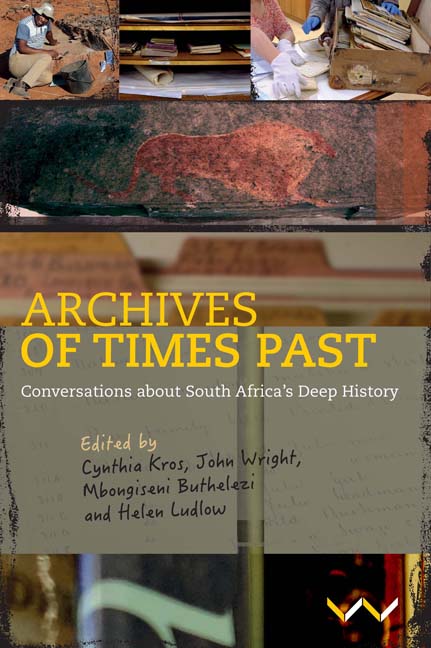Book contents
- Frontmatter
- Contents
- List Of Illustrations
- Acknowledgements
- Editorial Note
- Map
- PART I FIRST THOUGHTS ABOUT THE ARCHIVE
- PART II COMMENTARIES AND CONVERSATIONS
- PART III BECOMING EXPLORERS
- PART IV ENGAGING WITH ARCHAEOLOGY AND ROCK ART
- PART V CONFLICTING OPINIONS
- PART VI FURTHER THOUGHTS
- Glossary
- Contributors
- Index
Chapter 15 - Storm Shelter: Rediscovering an Archive of Rock Art
Published online by Cambridge University Press: 26 May 2022
- Frontmatter
- Contents
- List Of Illustrations
- Acknowledgements
- Editorial Note
- Map
- PART I FIRST THOUGHTS ABOUT THE ARCHIVE
- PART II COMMENTARIES AND CONVERSATIONS
- PART III BECOMING EXPLORERS
- PART IV ENGAGING WITH ARCHAEOLOGY AND ROCK ART
- PART V CONFLICTING OPINIONS
- PART VI FURTHER THOUGHTS
- Glossary
- Contributors
- Index
Summary
A FLASH OF BRILLIANT COLOUR
In December of 1992, when I was an archaeology student at Wits University, I joined a field trip with another student and Professor David Lewis-Williams. From Johannesburg, we drove for many hours along a route that took us to a remote part of the uKhahlamba mountains near Maclear in the Eastern Cape. The farms at the base of the mountains are used mainly for grazing cattle in summer or they are part of tree plantations, and very few people live there.
Part of our work was to search the rugged foothills for sites of rock paintings that had not yet been recorded by archaeologists. These paintings had been made by hunter-gatherers who had lived in the area for many centuries. Some of these groups had broken up in the nineteenth century when colonial rule was being established in the Eastern Cape.
On one particular day, I went with the other student, Sven Ouzman, to explore a deep, narrow valley at the sources of the Pot River. We were climbing an east-facing slope, heading for a band of sandstone where we could see an overhang that looked like a possible shelter. In these mountains, rock paintings are often found in shelters of this kind. A dangerous lightning storm was sweeping off the high peaks of the uKhahlamba towards the valleys lower down, so we were moving quickly.
When we reached the shelter, we were delighted to find a large panel of paintings on the back wall. Most of them were pictures of eland, which are very commonly found in the rock art of the uKhahlamba. Unfortunately, many of the paintings were low down on the wall, allowing for cattle and sheep that had entered the shelter to rub against them. Many of the paintings were damaged; others were covered in dust thrown up by the hooves of passing animals.
Ouzman began taking photographs of the paintings and making notes about them. I left him in the shelter, and began looking for other painted sites along the slope. I found two more, but with only a few images in each. I entered a third shelter, but here, too, cattle had damaged the paintings so that only a few traces of them were visible.
- Type
- Chapter
- Information
- Archives of Times PastConversations about South Africa's Deep History, pp. 211 - 216Publisher: Wits University PressPrint publication year: 2022

